Fresh milk in Japanese is commonly called Gyūnyū.
However, in reality there are many types.
In Japan, just saying “fresh milk” means 100% pure fresh milk, without adding or subtracting any ingredients.
Depending on the sterilization method and content adjustment, the name of the milk also changes.
To make it easier for you to choose among the many types of milk sold in supermarkets, in this article I will introduce details about Japanese milk types.
Types of fresh milk in Japan
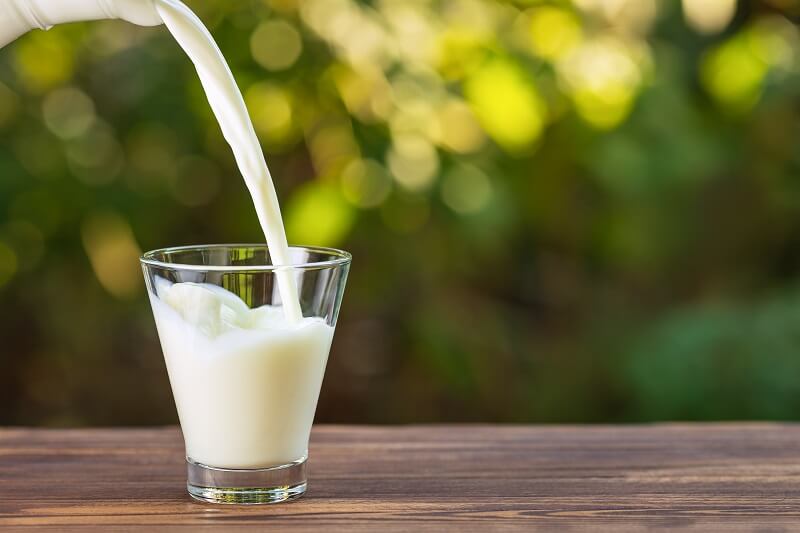
Basically, fresh milk sold in Japanese supermarkets has 4 main groups as follows.
- Whole milk (成分無調整牛乳)
- Ingredient-adjusted milk (成分調整牛乳)
- Processed milk (加工乳)
- Milk beverages (乳飲料)
Each group will include many different types of milk summarized in the table below.
| Group | Type of milk |
|---|---|
| Whole milk | ・Pure fresh milk |
| Ingredient-adjusted milk | ・Low-fat milk ・Skim milk |
| Processed milk | ・Low fat type ・Skim type ・High fat type |
| Milk beverage | ・Milk with added minerals ・Milk with added flavors ・Lactose-free milk |
Whole milk
Whole milk is called Seibun Muchōsei Gyūnyū (成分無調整牛乳) in Japanese.
This is also the Gyūnyū (牛乳) that we learned in the elementary Japanese textbook.
Whole milk is 100% pure fresh milk, sterilized at high temperature and retains the ratio of all ingredients inherent in milk such as fat, minerals…
According to regulations in Japan, unmodified milk Adjusted ingredients must contain fat content of 3% or more.
Below are pictures of some types of whole milk commonly sold in Japanese supermarkets.
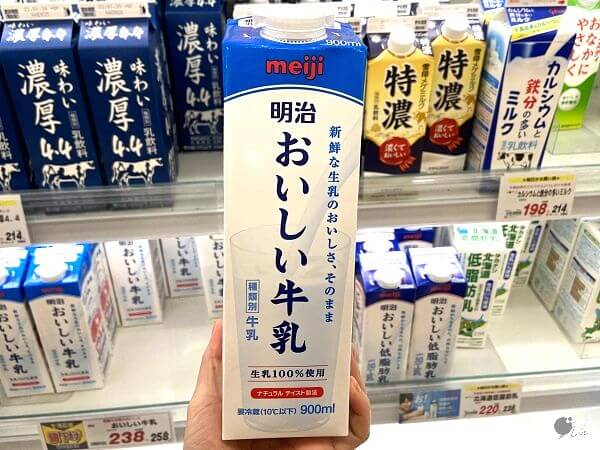
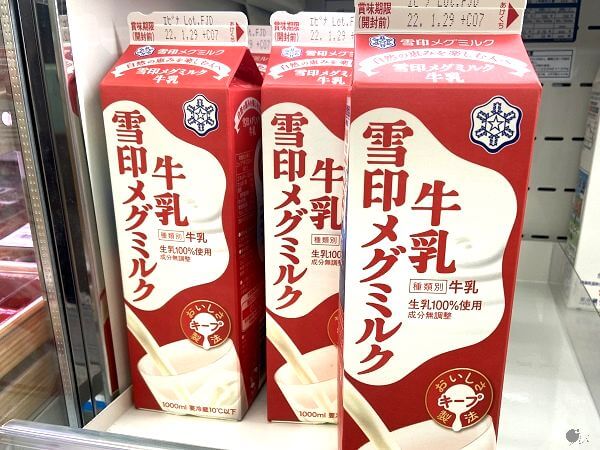
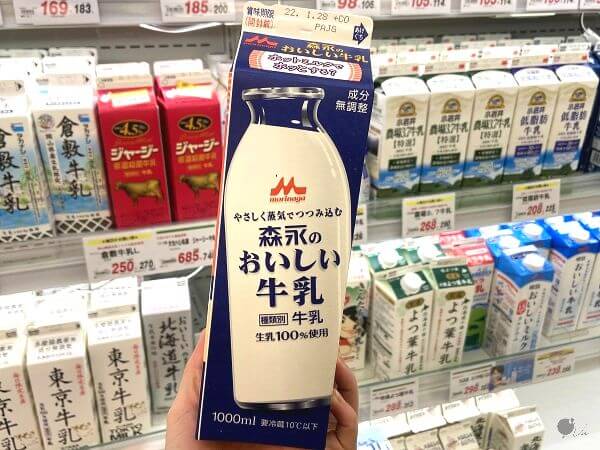
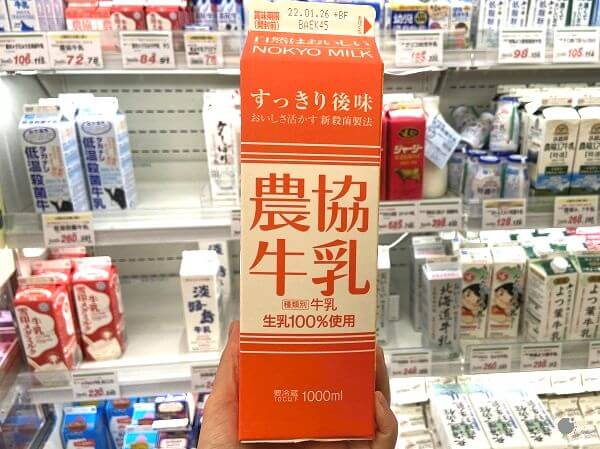

Unadjusted milk is not too sweet, has moderate fat, and is delicious for drinking or cooking.
What is pasteurized milk?
Sometimes in Japanese supermarkets, you will see boxes of fresh milk with 「低温殺菌牛乳」(Teion Sakkin Gyūnyū) printed on the packaging.
This is pasteurized milk.
Pasteurized milk is also 100% pure fresh milk, but is sterilized at a temperature of about 63~75 degrees for about 15~30 minutes.
This method will help the vitamins and minerals in milk to be less degraded and retain the milk’s pristine aroma.
Below are pictures of some types of pasteurized milk in Japanese supermarkets.
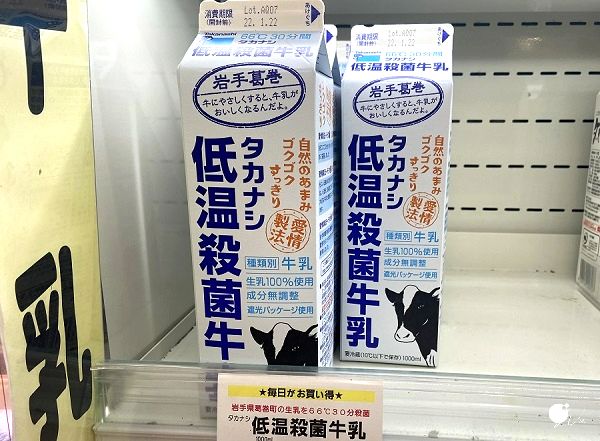
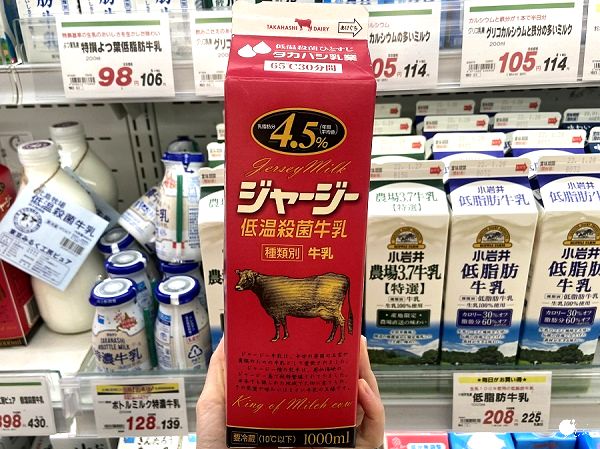

Pasteurized milk is very delicious and rich in milk flavor. However, the expiration date is relatively short (only about 2~3 days), so remember to drink it quickly.
Ingredient-adjusted milk
Ingredient-adjusted milk is called 「成分調整牛乳」(Seibun Chōsei Gyūnyū) in Japanese.
Ingredient-adjusted milk is also pure fresh milk but has removed the amount of fat, water, minerals… inherent in milk.
In Japan, ingredient-adjusted milk has 2 main versions.
- Low-fat milk: called「低脂肪牛乳」(Teishibō Gyūnyū) in Japanese, has a fat content of 0.5~1.5%.
- Skim milk: called「無脂肪牛乳」(Mushibō Gyūnyū) in Japanese, has a fat content of less than 0.5%.
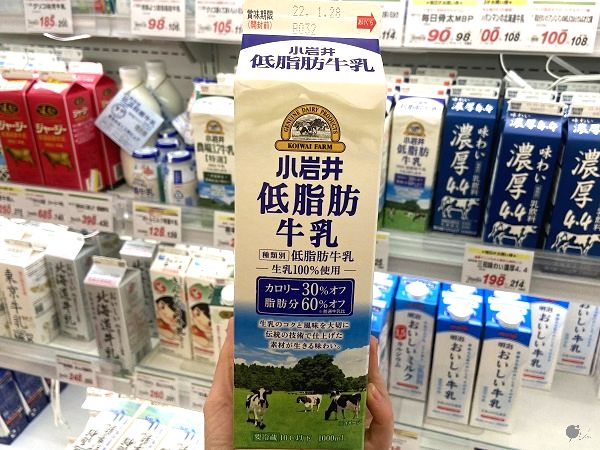
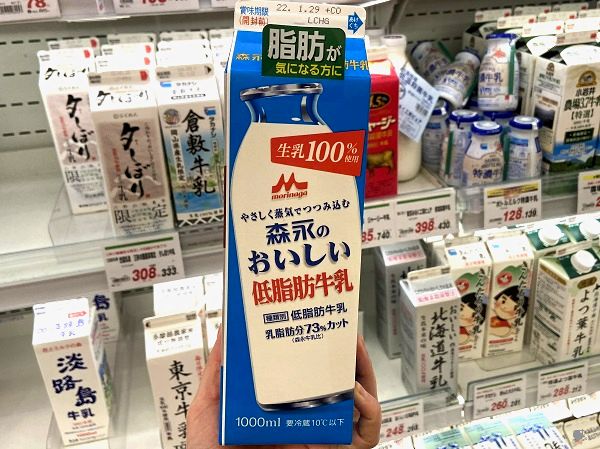
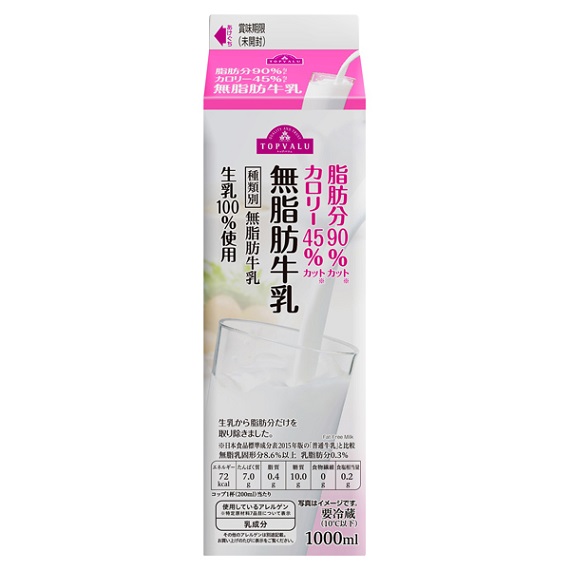
(Source: https://www.topvalu.net/)
If the packaging only says「成分調整牛乳」(Seibun Chōsei Gyūnyū) without clearly stating whether it is low-fat milk or skim milk, it can be understood that this is milk with adjusted ingredients with a fat content of over 1.5%.
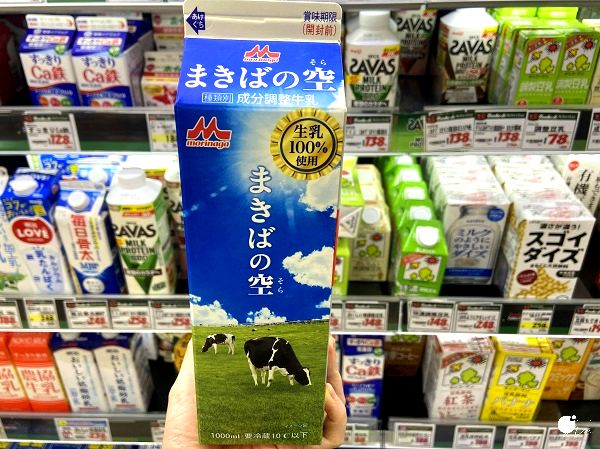

If you like to drink milk but are afraid of gaining weight, you can choose low-fat or skim milk for peace of mind.
Processed milk
Processed milk is called「加工乳」(Kakōnyū) in Japanese.
Processed milk is fresh milk with other ingredients added and these ingredients must originate from milk.
There are 3 main types of processed milk:
- Low-fat type: called「低脂肪乳」(Teishibōnyū) in Japanese.
- Skim type: called「無脂肪乳」(Mushibōnyū) in Japanese.
- High fat type: called「特濃乳」(Tokunōnyū) in Japanese.
For low-fat or skim types, in addition to reducing the fat content in milk, they also add skim milk powder.
For high fat types, they often add condensed milk, cream, butter… to make the milk flavor richer.
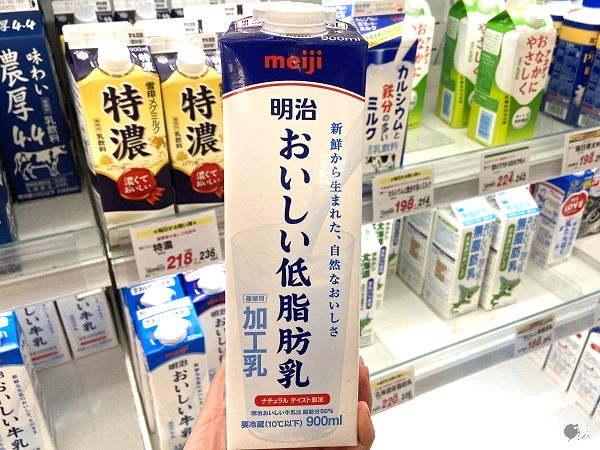
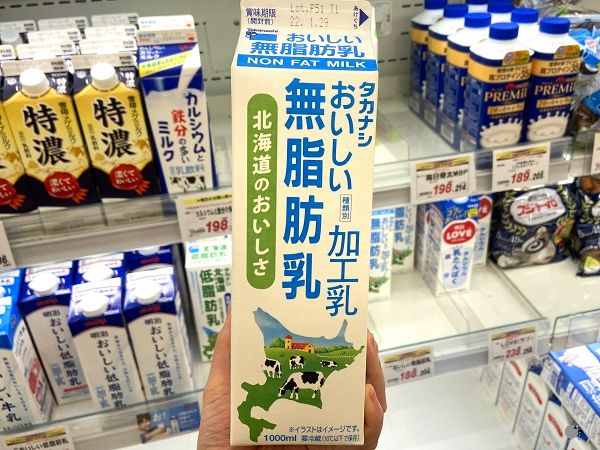
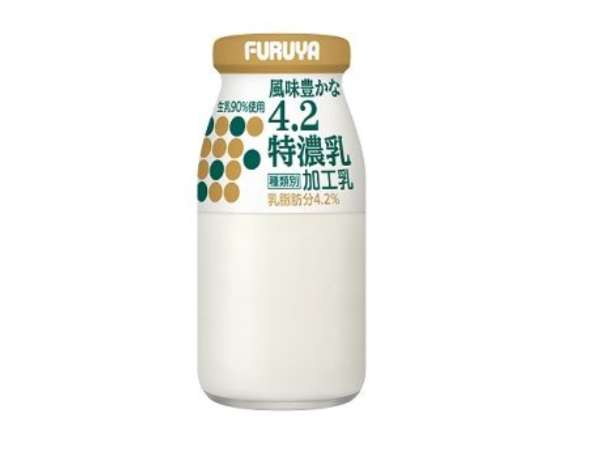
Source: https://homemilk.co.jp/

For those who enjoy rich and creamy milk, don’t overlook high fat type of processed milk.
Milk beverages
Milk beverages are called「乳飲料」(Nyūinryō) in Japanese.
Milk beverages are the common name for beverage products made from milk and containing other ingredients.
Iron-fortified milk, fruit-flavored milk, lactose-free milk… are all included in the group of “milk beverages”.
Let’s take a look at some of the images below to better understand milk beverages.
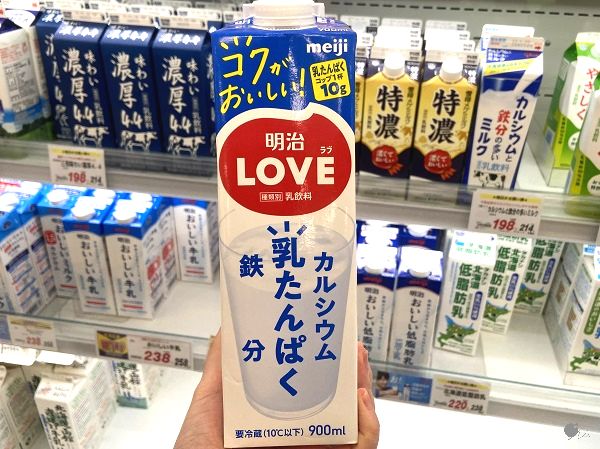
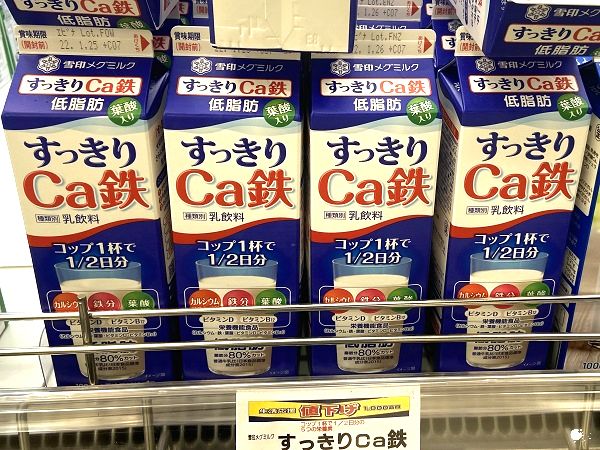
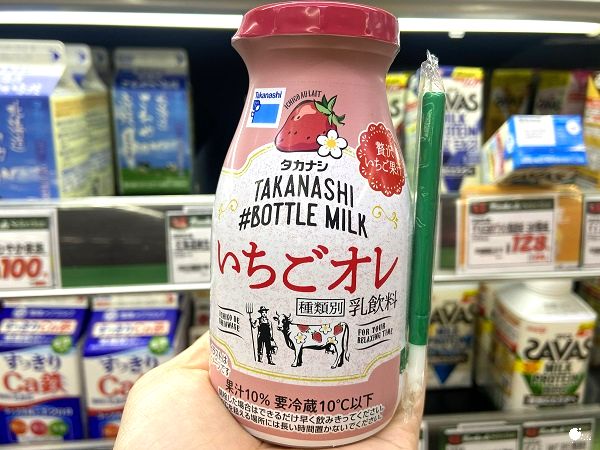
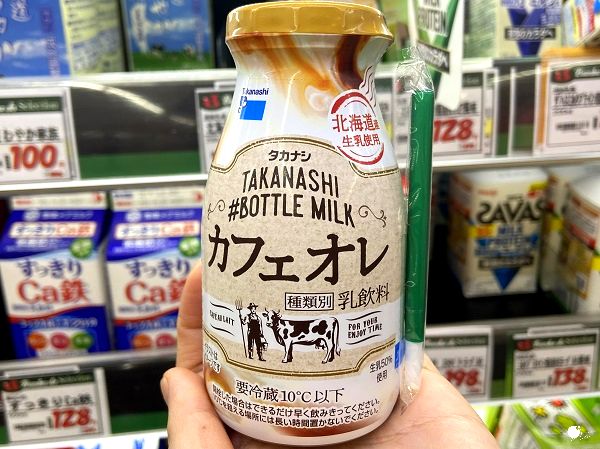
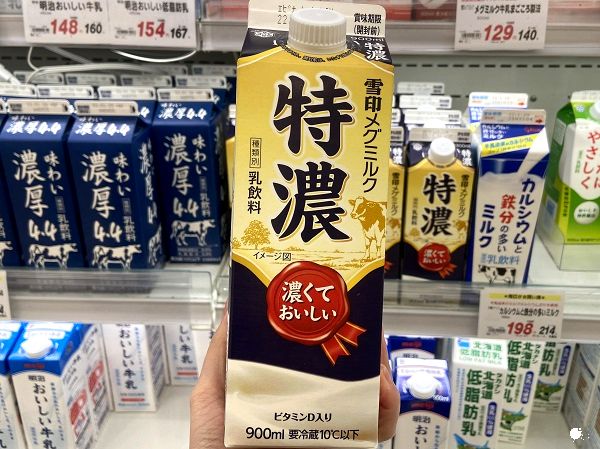

It’s so convenient to drink milk and get more minerals at the same time! For those who often have stomachaches when drinking pure fresh milk, you should choose lactose-separated milk to be safe.
Conclusion
Fresh milk in Japan is so diverse, right?
Not to mention, depending on the locality and supermarket system, there are many other types of milk.
However, basically, fresh milk in Japanese supermarkets only belongs to 1 of the following 4 groups:
- Whole milk (成分無調整牛乳): is pure fresh milk
- Ingredient-adjusted milk (成分調整牛乳): is pure fresh milk with some ingredients removed
- Processed milk (加工乳): is milk with added ingredients made from milk
- Milk beverages (乳飲料): is milk with added minerals, flavors…
Hopefully through this article you will better understand the basic characteristics of each type so you can confidently choose the right type of milk for yourself.

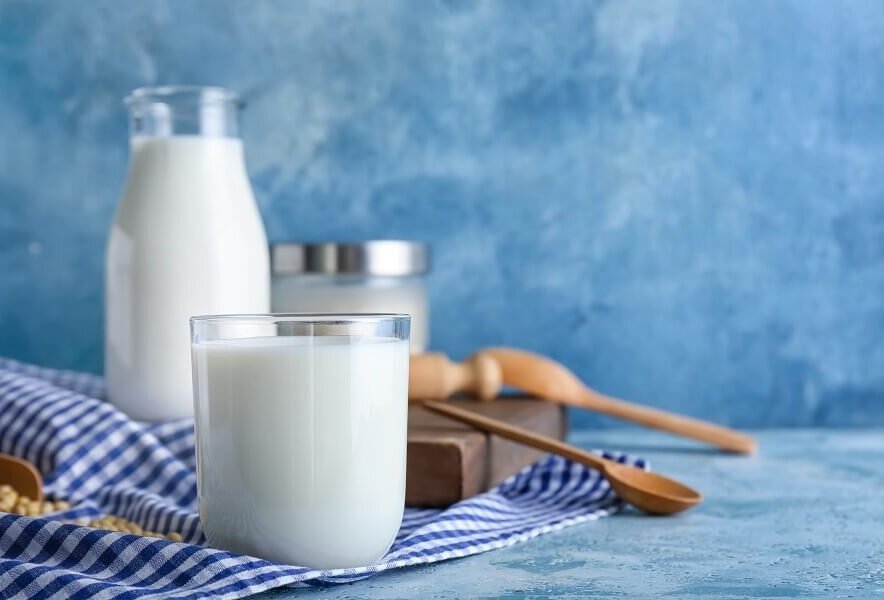



Comment